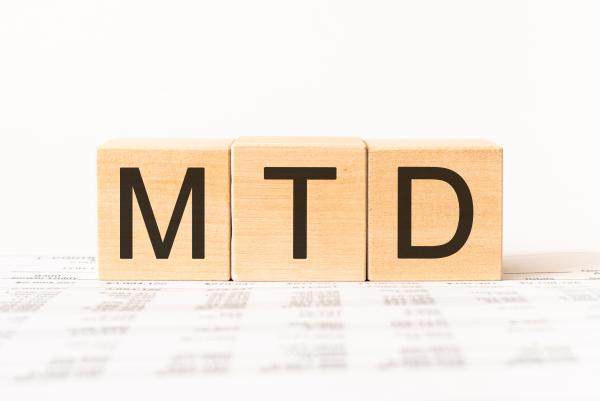
How does the income exemption work for MTD?
Last updated 3 April 2025
The introduction of Making Tax Digital for Income Tax (MTD) will be phased, based on an individual’s ‘qualifying income’.
At the Spring Statement on 26 March 2025, the Government re-affirmed its commitment to delivering MTD by announcing that, from April 2028, MTD will be expanded to cover landlords and sole traders with qualifying income of over £20,000.
The first taxpayers to join MTD will be those with qualifying income from trading and property of over £50,000, who will be required to join in April 2026. Those with qualifying income of over £30,000 will then join a year later in April 2027. Finally, those with qualifying income over £20,000 will join in April 2028.
Taxpayers with qualifying income below the £50,000 threshold will be automatically exempt from MTD in 2026/27. Taxpayers with qualifying income below the £30,000 threshold will be exempt in 2027/28. From 2028/29 onwards, taxpayers with qualifying income below £20,000 will be exempt.
How will the thresholds work in practice?
To start with, there are a couple of important points to note about the £50,000, £30,000 and £20,000 thresholds:
- They apply to gross trading / property income or turnover, not profit.
- They apply to the total gross income where the individual has more than one trade or property business. For example, if an individual has £16,000 of rental income and £37,000 of sales from a sole trader business, they will exceed the £50,000 threshold and be mandated into MTD from April 2026.
When applying the income threshold for any specific tax year, HMRC will look at the tax return for which the filing deadline fell just before the start of that tax year.
For 2026/27, the first tax year for which MTD will be mandated, HMRC will look at the figures for the return for 2024/25 (filing deadline 31 January 2026). For 2027/28 they will look at the return for 2025/26 (filing deadline 31 January 2027) etc.
For example, let’s assume a taxpayer has the following qualifying income:
- 2024/25 - £45,000
- 2025/26 - £52,000
To see if they are mandated into MTD in 2026/27, HMRC will look at their qualifying income in 2024/25, based on the tax return for that year which was due by 31 January 2026. As this is under £50,000, this taxpayer will not have to join MTD from 6 April 2026.
To see if they are mandated in 2027/28, HMRC will look at their qualifying income in 2025/26. As this is above £30,000, the taxpayer will have to join MTD from 6 April 2027.
Which figures will HMRC look at?
HMRC have indicated they will look at the following Self-Assessment (SA) return boxes in applying the £50,000, £30,000 and £20,000 thresholds:
- Self-Employment Turnover - either SA103F - Box 15 or SA103S - Box 9 or SA200 box 3.6
- Self-Employment Other Income - either SA103F - Box 16 or SA103S - Box 10
- UK Property Income - either SA105 Box 20 or SA200 box 6.1
- Other UK Property Income (grant of lease) - SA105 Box 22
- Other UK Property Income (reverse premiums) - SA105 Box 23
- (For 2024/25 only) Furnished Holiday Let (FHL) Income - SA105 Box 5
- Foreign Property Gross Income - SA106 Box 14
- Foreign Property Income (premiums) - SA106 Box 16
The figures reported in these boxes will be combined and, if the total exceeds the relevant threshold, the taxpayer will have to join MTD from the start of the next tax year following the filing deadline for the return in question, as explained above.
Income which is not declared on the SA return will not be taken into account when applying the thresholds. This means that, for example, rent a room receipts below the £7,500 threshold, or trading or property income below £1,000 where the trading / property allowance is claimed, will not count towards the threshold (provided they are not included on the SA return).
For example, an individual with £19,000 of trading income and £5,000 of rent a room income will not be mandated into MTD, as the rent a room receipts are not reported in their tax return and therefore ignored for the purposes of the threshold test.
However, if the individual is mandated into MTD anyway (ie because they have other income which takes them above the threshold) they will be required to account for all of their property or trading income under MTD. This means that, for example, an individual with trading turnover of £36,000 and rent a room receipts of £5,000 will have to meet the MTD requirements for both their trade and their property income from 2027/28.
What about new trades or businesses?
Where a source of trading or property income starts part way through a year (for example because the taxpayer has started a new trade) the turnover data should be grossed up to give an estimate for the full tax year. For example, if a trade starts on 1 January and has turnover of £8,000 to 5 April, that will be annualised to give a figure of £32,000 for the purposes of the threshold test.
However, the MTD regulations do provide for an alternative approach of applying a just and reasonable method if annualising ‘would work unreasonably or unjustly’. This may be helpful for seasonal trades, where income is not expected to be even throughout the year, though HMRC have not yet confirmed their position.
What if income subsequently drops below the threshold?
Once an individual is mandated into MTD, they will only become exempt if their qualifying income falls below the threshold for three consecutive tax years (based on filed tax returns, or quarterly updates where the deadline has not yet passed for filing the return for a year).
For example, let’s assume an individual has the following qualifying income:
- 2024/25 - £52,000
- 2025/26 - £35,000
- 2026/27 - £15,000
- 2027/28 - £15,000
- 2028/29 - £5,000
This individual will be mandated into MTD from 6 April 2026 (2026/27) as the £50,000 income threshold is applied to the income for 2024/25 (ie the return due for filing on 31 January before the start of tax year 2026/27). It does not matter that their income in 2025/26 was below the £50,000 threshold.
In order to be exempt, they must have three consecutive years where they were within MTD, but their qualifying income was less than the relevant threshold in each of those years. This means that the individual won't be exempt from MTD until 2029/30.
Depending on the facts and circumstances, it may be possible to apply for exemption before those three years have elapsed, on the grounds it is ‘not reasonably practicable’ for them to comply with MTD (for example because they are winding down the business and have very low profits which are extinguished by the costs of complying with MTD). However, they would need to convince HMRC that they meet the requirements for this exemption.
A number exemptions and deferrals will be available, please refer to our MTD Frequently Asked Questions for more information.
This article reflects the position at the date of the most recent update shown above. If you are reading this at a later date you are advised to check that that position has not changed in the time since.















